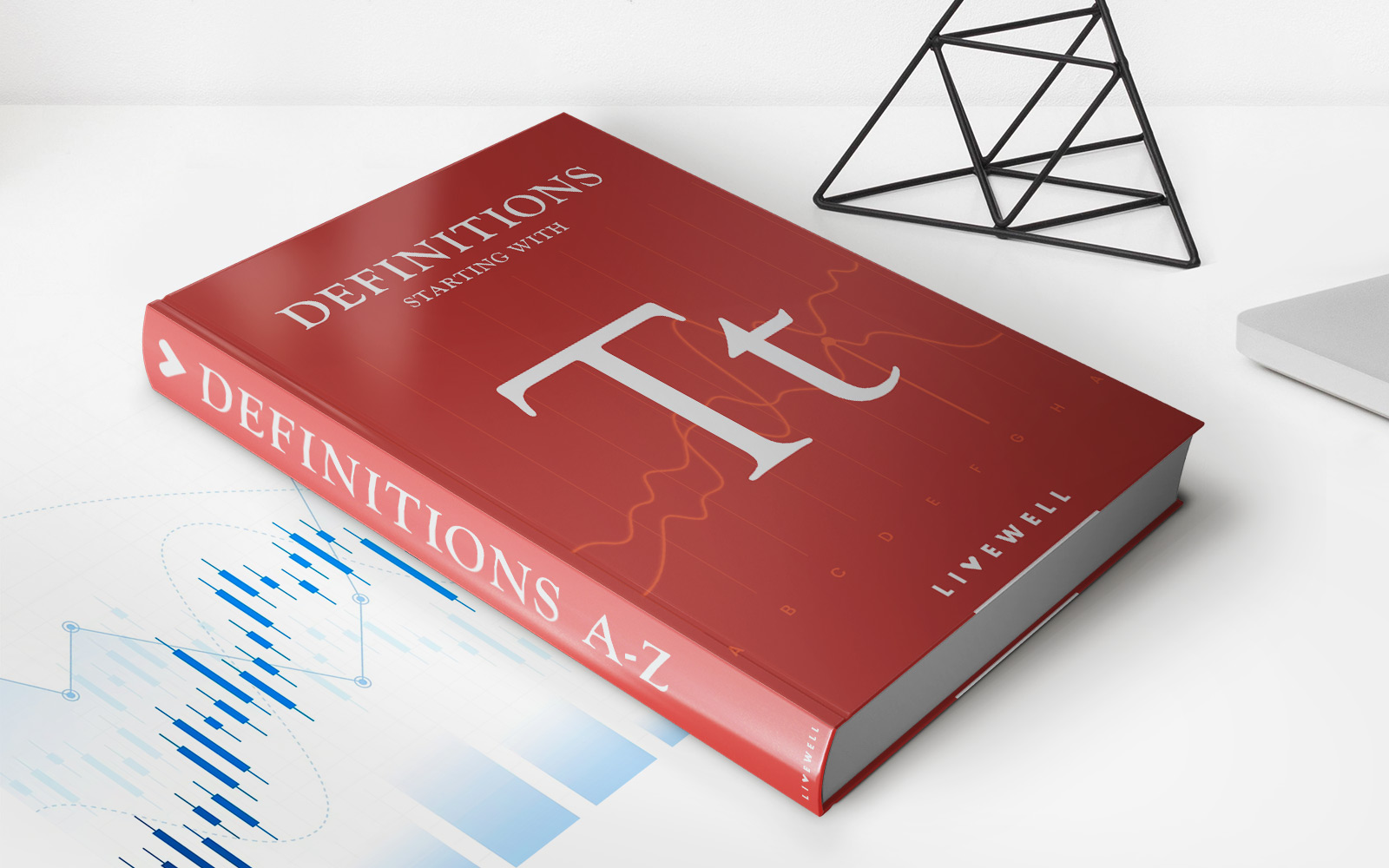

Finance
What Is The 401K Limit For 2017
Published: October 15, 2023
Discover the 401K contribution limit for 2017 and make the most of your finances. Stay ahead in the world of finance with our expert insights.
(Many of the links in this article redirect to a specific reviewed product. Your purchase of these products through affiliate links helps to generate commission for LiveWell, at no extra cost. Learn more)
Table of Contents
Introduction
When it comes to financial planning for retirement, one of the most popular and effective tools available is the 401(k) plan. Offered by many employers, the 401(k) plan allows employees to save and invest a portion of their salary for retirement on a tax-deferred basis.
However, as with any investment vehicle, there are limitations to how much you can contribute to your 401(k) plan each year. These contribution limits are set by the Internal Revenue Service (IRS) and are subject to change on an annual basis.
In this article, we will explore the 401(k) limit for the year 2017 and discuss the implications of exceeding this limit. We will also provide some strategies to maximize your 401(k) contributions within the set limits.
Understanding the 401(k) limit is crucial for individuals who want to make the most of their retirement savings while staying compliant with the IRS regulations. So, let’s dive in and explore what the 401(k) limit for 2017 is and how it can impact your retirement planning.
Understanding the 401(k) Limit
The 401(k) limit refers to the maximum amount of money that an individual can contribute to their 401(k) plan in a given calendar year. This limit is set by the IRS and serves as a way to control retirement savings and tax benefits.
The IRS updates the 401(k) limit periodically to account for inflation and other economic factors. It is important to note that the limit applies to both employee contributions and any employer matching contributions made on behalf of the employee.
For 2017, the 401(k) contribution limit is $18,000 for individuals under the age of 50. This means that if you are under 50 years old, you can contribute up to $18,000 to your 401(k) plan for the year.
It is essential to understand that this limit only applies to your contributions and does not include any additional contributions made by your employer. If your employer offers a matching contribution, you can exceed the $18,000 limit when both your contributions and the employer match are taken into account.
However, it’s important to keep in mind that there is an overall limit for all contributions (employee and employer combined) known as the “annual addition limit.” For 2017, this limit is set at $54,000. This means that the total amount contributed by both the employee and the employer cannot exceed $54,000 for the year.
Understanding the 401(k) limit is crucial for individuals who want to maximize their contributions while taking advantage of the tax benefits provided by these retirement accounts. By staying within the set limits, you can ensure compliance with IRS regulations and make the most of your retirement savings.
Contribution Limits for 2017
For the year 2017, the contribution limits for 401(k) plans are as follows:
- For individuals under the age of 50: The maximum amount that can be contributed is $18,000. This includes both employee contributions and any employer matching contributions.
- For individuals aged 50 and older: An additional catch-up contribution of $6,000 is allowed. This means that individuals in this age group can contribute a total of $24,000 to their 401(k) plans for the year.
It’s important to note that these limits apply to each individual’s total contributions, regardless of whether they have multiple 401(k) accounts. If you have more than one 401(k) account, the combined contributions to all accounts cannot exceed the annual limit.
It’s also worth mentioning that the contribution limits may vary for participants in a 401(k) plan with a 457(b) or 403(b) plan. Therefore, it’s advisable to consult with your plan administrator or financial advisor to understand the specific contribution limits for your particular situation.
Contributing the maximum amount allowed by the IRS has several advantages. Firstly, it allows you to take full advantage of the tax benefits associated with 401(k) plans. Contributions made to a traditional 401(k) plan are tax-deferred, meaning they are deducted from your taxable income. This can lower your overall tax liability for the year.
Additionally, contributing the maximum amount allows your retirement savings to grow over time. By taking advantage of the power of compounding, your contributions can generate substantial returns over the course of your career.
However, it’s also important to consider your overall financial situation and investment goals when determining your contribution amount. While contributing the maximum may be beneficial, it’s crucial to ensure that you have enough income to cover your day-to-day expenses and other financial obligations.
By understanding the contribution limits for 2017, you can make informed decisions about how much to contribute to your 401(k) plan and take advantage of the tax benefits and long-term growth potential that these retirement accounts offer.
Catch-Up Contributions for 2017
For individuals aged 50 and older, the IRS allows for additional catch-up contributions to 401(k) plans. These catch-up contributions are designed to help individuals who are nearing retirement age to boost their retirement savings.
In 2017, the catch-up contribution limit is set at $6,000. This means that if you are 50 years old or older, you can contribute an additional $6,000 on top of the regular contribution limit of $18,000.
With the catch-up contribution option, individuals aged 50 and above can contribute a total of $24,000 to their 401(k) plans for the year. This extra contribution can make a significant difference in building a larger retirement nest egg.
The purpose of catch-up contributions is to allow individuals who may not have been able to save as much for retirement in their younger years to make up for lost time. It provides an opportunity to accelerate retirement savings and bridge the gap between current savings and future retirement goals.
It’s important to note that catch-up contributions are not mandatory and are entirely voluntary. Individuals have the flexibility to decide whether or not to take advantage of this option based on their financial situation and retirement goals.
By making catch-up contributions, individuals can potentially improve their financial security in retirement. These additional contributions can have a compounding effect, allowing for more substantial growth over time. With the power of compounding, even a few extra years of contributions can make a significant impact on the overall size of a retirement portfolio.
It’s crucial to keep in mind that the catch-up contribution option is only available to individuals who are 50 years old or older. If you are eligible, it’s recommended to take advantage of this opportunity to maximize your retirement savings potential.
Consulting with a financial advisor or your plan administrator can be beneficial in determining whether catch-up contributions are appropriate for your retirement strategy. They can help you evaluate your individual circumstances and guide you in making informed decisions to secure a comfortable and financially stable retirement.
Special Rules for Highly Compensated Employees
When it comes to 401(k) plans, there are special rules and limitations that apply to highly compensated employees (HCEs). These rules are in place to prevent discrimination and ensure fairness among employees when it comes to retirement savings.
An HCE is defined as an employee who meets certain criteria set by the IRS, such as earning above a certain income threshold or holding a key position within the company. For the 2017 plan year, the income threshold for HCEs is $120,000.
One of the main considerations for HCEs is the “nondiscrimination testing” requirement. This testing ensures that the contributions made by HCEs to their 401(k) plans are not disproportionately higher than those made by non-highly compensated employees.
If the plan fails the nondiscrimination testing, HCEs may be subject to a “return of excess contributions” requirement. This means that any contributions made by HCEs above the allowable limit may need to be returned to them, along with any associated earnings. This ensures fairness among employees and prevents high-income employees from receiving preferential treatment in retirement plan contributions.
It’s important for HCEs to work closely with their plan administrators and financial advisors to understand the specific rules and limitations that apply to them. By doing so, they can maximize their 401(k) contributions within the guidelines and avoid any potential penalties or compliance issues.
In some cases, employers may offer alternative retirement savings options, such as nonqualified deferred compensation plans, for highly compensated employees. These plans can provide additional opportunities for retirement savings and may offer more flexibility when it comes to contribution limits.
It’s crucial for highly compensated employees to proactively manage their retirement savings and take advantage of all available options. By working closely with financial professionals, they can navigate the special rules and limitations to make the most of their retirement plans while staying compliant with IRS regulations.
Impact of Exceeding the 401(k) Limit
Exceeding the 401(k) contribution limit set by the IRS can have financial implications and may result in unintended consequences. It’s crucial to understand the potential impact of exceeding the limit to avoid any penalties and ensure compliance with tax regulations.
If you contribute more than the allowed amount to your 401(k) plan, the excess contributions will be subject to an excise tax. The IRS treats excess contributions as taxable income in the year in which the excess occurred. This means that you will not only be responsible for paying taxes on the excess amount but also incur an additional penalty of 6% on the excess contributions.
To rectify the situation, you will need to take corrective action by withdrawing the excess contributions, along with any associated earnings, from your 401(k) plan. This is typically referred to as an “excess deferral distribution” and must be done before the tax filing deadline for the year in which the excess occurred.
It’s important to note that excess contributions are not eligible for any tax benefits or deductions. Therefore, you will not receive any tax advantages for the excess amount and may need to adjust your tax filings accordingly.
Exceeding the 401(k) limit can also have implications for any employer matching contributions you may be eligible for. Most employer matching contributions are based on a percentage of your salary and contributions up to the annual limit. If you exceed the limit, you may miss out on additional matching contributions, which can impact the overall growth of your retirement savings.
While inadvertent errors can happen, it’s essential to monitor your contributions throughout the year to ensure they stay within the allowable limits. Reviewing your pay stubs, checking your account statements, and staying informed about any changes in the contribution limits can help you avoid exceeding the limit unintentionally.
By understanding the potential impact of exceeding the 401(k) limit and taking proactive steps to monitor your contributions, you can ensure compliance with IRS regulations, avoid unnecessary taxes and penalties, and maximize the benefits of your retirement savings.
Strategies to Maximize your 401(k) Contributions
Maximizing your 401(k) contributions is an effective way to boost your retirement savings and take advantage of the tax benefits offered by these retirement accounts. Here are some strategies to help you make the most of your 401(k) contributions:
- Contribute up to the maximum limit: The first and most obvious strategy is to contribute as much as you can, up to the maximum limit allowed by the IRS. For 2017, the limit is $18,000 for individuals under 50, with an additional catch-up contribution of $6,000 for those 50 and older.
- Start early and contribute consistently: The power of compounding can significantly impact your retirement savings over time. Starting early and contributing consistently allows your contributions to grow and generate returns. Aim to contribute a percentage of your salary each paycheck to develop a disciplined savings habit.
- Take advantage of employer matching: If your employer offers a matching contribution, make sure to contribute enough to maximize the matching benefit. This is essentially free money that can significantly accelerate your retirement savings. Aim to contribute at least enough to receive the full employer match.
- Consider a Roth 401(k) option: Some employers offer a Roth 401(k) option in addition to the traditional pre-tax contribution. While Roth contributions are made with after-tax dollars, qualified withdrawals in retirement are tax-free. Consider a Roth 401(k) if you anticipate being in a higher tax bracket during retirement.
- Automate your contributions: Set up automatic contributions from your paycheck to your 401(k) account. This ensures that you consistently contribute without having to remember or make manual transfers. Automating your contributions also eliminates the temptation to spend the money elsewhere.
- Review your budget and expenses: Take a critical look at your budget and expenses to identify areas where you can cut back and allocate more funds towards your 401(k) contributions. This may involve reducing discretionary spending, renegotiating bills, or finding ways to save on everyday expenses.
- Seek professional advice: Consider consulting with a financial advisor who specializes in retirement planning. They can provide personalized guidance and help you create a comprehensive retirement strategy that aligns with your goals and risk tolerance.
By implementing these strategies, you can maximize your 401(k) contributions and make significant progress towards building a solid retirement fund. Remember, the key is consistency and discipline in saving, taking advantage of employer matching, and making informed decisions with professional guidance.
Conclusion
Understanding the 401(k) limit for 2017 is essential for effective retirement planning. By knowing the contribution limits and special rules that apply, individuals can make informed decisions about their retirement savings while maximizing the benefits offered by 401(k) plans.
Contributing the maximum allowed amount to your 401(k) plan can provide significant advantages, such as tax benefits and compounded growth over time. Taking advantage of catch-up contributions for individuals aged 50 and older can help bridge any retirement savings gaps and accelerate your path to financial security.
However, it’s crucial to stay within the defined limits to avoid penalties and unintended financial consequences. Exceeding the 401(k) limit can result in tax liabilities, penalties, and potential loss of employer matching contributions.
By following strategies like contributing consistently, taking advantage of employer matching, and considering a Roth 401(k) option, individuals can maximize their 401(k) contributions and make significant progress towards their retirement goals.
Remember to regularly review your contributions, revisit your budget, and seek professional guidance to ensure that you are on track with your retirement plans. A financial advisor can help create a personalized retirement strategy that aligns with your specific needs and goals.
In conclusion, understanding and adhering to the 401(k) limit for 2017 is crucial for individuals who want to make the most of their retirement savings. By staying within the allowable limits, individuals can enjoy tax advantages, employer matching contributions, and grow their retirement nest egg over time.
Start planning early, contribute consistently, and make informed decisions to secure a financially stable and comfortable retirement. Your future self will thank you for taking the necessary steps now to maximize your 401(k) contributions.














